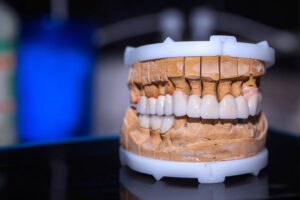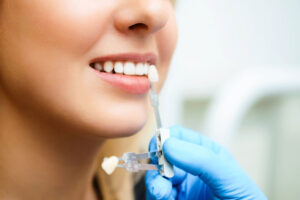 A hole in your smile is never a good thing. It negatively affects your appearance, your eating, your speaking, and your overall sense of confidence and wellbeing. Let Fort Worth Cosmetic & Family Dentistry bridge the gap between where you are with your smile and where you want to be!
A hole in your smile is never a good thing. It negatively affects your appearance, your eating, your speaking, and your overall sense of confidence and wellbeing. Let Fort Worth Cosmetic & Family Dentistry bridge the gap between where you are with your smile and where you want to be!
A missing tooth or teeth can also cause jaw pain and bite misalignment. Without a full set of teeth, your other teeth have a tendency to move into the empty space causing an unnatural alignment in your bite and jaw—which can be very uncomfortable and can lead to bigger headaches and TMJ/TMD problems.
Dr. Green, Dr. Leedy, & Dr. Gabr share how each tooth plays an important role in your health and everyday life, and how dental bridges can restore your smile and the function of your teeth.
Types of Bridges
Depending on your needs, there are three common kinds of bridges that your dentist may recommend. The difference among these types is how they are installed and secured.
The core of every bridge is your false tooth or teeth that replace what’s missing. Today these are usually made of quality porcelain and can serve daily functions just as well as your natural teeth including eating, speaking and flashing a smile!
Bridges use the teeth on either side to secure your false tooth or teeth in place. Sometimes they involve a crown or two over these neighboring teeth, sometimes not. These neighboring teeth, called abutment teeth, are very important. The type of bridge you get will depend on how many abutment teeth are used in your bridge.
- A traditional bridge is supported by two neighboring teeth, each covered in a crown. Your false tooth is suspended in place between the two crowns. Traditional bridges are the most common.
- A cantilever bridge is less common but can be made when your missing tooth only has one neighbor tooth. Like a traditional bridge, the cantilever bridge uses one crown on one neighboring tooth, bonded to the false tooth to keep it in place.
- A Maryland bridge has no crowns on the neighboring teeth. This bridge uses metal wings on the side of the false tooth and bonds those wings directly to neighboring teeth for support.
Bridges vs. Dentures vs. Implants
If you’re looking into tooth replacement options, you may wonder the difference between bridges, dentures, and implants.
The main difference is that dentures are generally removable, and bridges and implants are not. Bridges are a “fixed” dental restoration meaning it cannot be removed.
Not everyone is a good candidate for implants, which require very healthy jawbone and gums to install false tooth roots.
Bridges are a good option if the teeth next to your gap would need a crown anyway, or if the gap has been there quite some time. Dental bridges are also usually cheaper than implants and they can look completely natural.
Getting A Bridge
To prepare your mouth for a bridge, the doctor will clean and shape any teeth (one or two, depending on your case) around where your bridge will be installed. These surrounding teeth are important for a healthy and permanent fit and function of the bridge.
Once you have a bridge, you should clean and care for it the same as all of your other teeth. That means brushing twice a day, flossing once a day, and coming to see your dentist twice a year.
If you’re ready to restore and improve your smile, call Fort Worth Cosmetic & Family Dentistry to make an appointment. Take back the full function and beauty of your unique smile today!
Sources
http://www.webmd.com/oral-health/guide/dental-health-bridges



